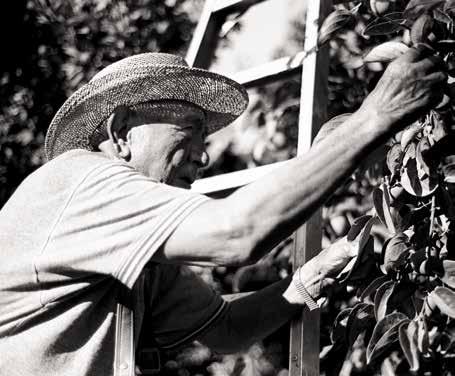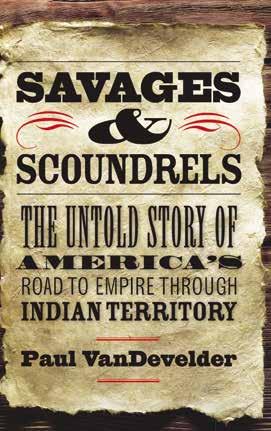
13 minute read
Rooftop Cocktail Parties
By Jonathan Twingley
My grandma had an uncle who lived to be nearly a hundred years old. His name was Abraham Running and he never had a regular job, he never married and he didn’t have any kids. Abraham Running had no conventional role in the world, and he certainly wouldn’t have fared very well in the world we live in now. Uncle Abe was a strange kind of character—a Bible-beater who never went to church, a hand-rolling cigarette smoker, a hot-dog-eater and he only ever took a bath when he absolutely had to. He made a slim living as a painter, but not for galleries or museums. Abraham painted barns and houses and bedrooms in western North Dakota a hundred years ago, before the Interstate Highway was born. He lived with a black Labrador in a little lean-to out on the open prairie after his family disowned him, but he wasn’t unhappy. I visited him for the first time one summer when I was in college and he had some great stories to tell me and we laughed a lot. He was ninety-six years old when I met him.
Advertisement
One time when he was young and looking for work, he told me, a woman had hired him to paint blue polka dots on her unborn baby’s bedroom ceiling. Abraham showed up at this woman’s house that evening with his worn-out paint brushes and a bucket of baby-blue house paint. She invited him into the house and showed him the bare little bedroom where she wanted the polka dots painted on the ceiling. She gave Abraham a ladder and left the room. Abraham Running had never gone to school, but he was a clever man. He climbed the ladder up to the ceiling of the bedroom and used the paint can lid as a stencil to trace out the polka-dot circles on the ceiling with a lead pencil. He did this while the woman was out of the room, and he did it artfully, tracing the polka dots onto the ceiling to reflect the Little Dipper and Polaris—the North Star—somewhere out there above them in that prairie celestial sky.

As Abraham dipped one of his worn-out brushes into his can of baby-blue house paint he was distracted—the woman who’d hired him was on her hands and knees on the bedroom floor, frantically spreading out copies of the McKenzie County Farmer, the local newspaper.
“What’re you doin’?” Abraham Running asked her from up there on the ladder, a half-lathered brush in his hand. “I can’t read and paint at the same time!”
I felt a little bit like that a few summers ago. I was healthy and young, studying how to be an artist at a famous New York City art school in Lower Manhattan, trying to read the writing on the wall. It was an expensive art school and I’d come to New York City with a firm understanding of who I was: Six foot four, lanky, homegrown and a little bit handsome, I suppose, in an innocent sort of way, curious, too, eyes wide open. But how do you study to be an Artist? That turned out to be the only thing I wanted to know from the teachers there and it was costing me a lot of money to ask the question. After a year in New York City I’d been to about a thousand rooftop cocktail parties, and at each one about nine out of ten people, when asked “What do you do?” usually answered: “Oh, I’m an Arteest.” Video Arteests, Installation Arteests, Performance Arteests, Protester Arteests, Cardboard Arteests, a whole Crayola boxful of flashy people who could describe themselves a lot better than I could. I wasn’t so sure. Things were still in the oven for me. New York City wasn’t just a fork in the road, it was a portal to a universe that was going to take some figuring out and I was always suspicious of those kids who already had job descriptions. I was figuring out that I’d been an Arteest all my life, and also that that word—Arteest—wasn’t taught in grammar schools in North Dakota. We spelled the word differently where I grew up.
I’d sent out a single graduate school application six months earlier. I was about to graduate from the little liberal arts college I’d been attending in western Minnesota, just across the Red River from Fargo, North Dakota. I had researched graduate schools a bit, but applied to only one in the end, a rather prestigious art school in New York City. I put the application in the mail just for the hell of it, on some level, because I had to do something. A bachelor’s degree in Art doesn’t carry a lot of water in this world, and there was always that practical little part of my brain that said: “Listen, sonny-boy, if you get a master’s degree you can teach someday, and you’ll probably have to, because it doesn’t make any sense making a living painting pictures. Use your head.”
But I had never laid awake at night in North Dakota dreaming of leaving, like some kids did. I’d always been pretty much content wherever I was. I was just like that, I guess, content to spend my days and nights drawing and painting, way out of my head in whatever was happening on the canvas at the time. I didn’t need to go anywhere to really travel. Art is like that.
As it turned out, though, my application to the art school in New York City was accepted and it was time for me to pack a bag. I’d been living with my parents that summer in Bismarck, which is the capital of North Dakota, pretty much smack-dab in the middle of the state, right there on the Missouri River. For money I’d been traveling around the Upper Midwest—South Dakota, Minnesota, Montana— drawing five-dollar caricatures of people at outdoor art festivals, exaggerating their noses and ears and eyes all out of proportion for a quick laugh. It wasn’t High Art, what I was doing, but it paid my tuition each fall and I assumed the money would spend the same way in New York as it had in Minnesota.
And whenever I imagined the campus of the art school I saw a sprawling-lawn campus like the university I’d been studying at in Minnesota, with trees and fountains and gardens. I arranged for a car to pick me up at the airport— just me, a suitcase and a bagful of brushes and pens and sketchbooks. If you’ve ever taken a car into Manhattan from LaGuardia Airport you know that monumental feeling and the raging butterflies you get crossing the bridge over the East River, the buildings-upon-buildings rising up in front of you like in an animated film, but nothing Mickey Mouse about it, a concrete Grand Canyon that not even Walt Disney himself could’ve ever dreamed up.
I’d given the driver the address of the dormitory I’d signed up for on Twenty-third Street and Lexington Avenue—a formerly grand hotel called the Livermore. He dropped me off, I paid him and he left. And there I was: No sprawling lawn campus in sight, no gardens or fountains, just the screams of taxicabs roaring down Lexington Avenue and the people-herds, the beggars and the beauties. I was in shock. In hindsight, I should have tried better to more realistically imagine where I was going, but I didn’t and the reality was incredibly exciting/terrifying/out-of-body, all at the same time. Because I’d never really even thought about a world beyond my mom and dad and little brother back there in Bismarck, or the lazy little college town in Minnesota. How could anything even really exist outside of that world I grew up in? Sure, I’d seen the cities of the world in late-night cable TV movies, but those were all just fiction to me, just somebody else’s fantasy. I had all sorts of fantasies, but my whole real world had been North Dakota, and I’d been more or less happy there in that world, content.

I checked into my tiny little room at the former old hotel and saw my first New York City cockroach. That first week I only left the building for slices of pizza across the street at the Pakistani/Mexican deli/pizzeria. The rest of the time I spent looking out my dormitory window with a sketchbook, just drawing the traffic and the people with a pencil, trying to put everything in perspective, trying to make this new world real.
The graduate program I enrolled in was a good one. There were sixteen or seventeen other students with me in the program, a diverse group of people—several Koreans, a woman from Italy, a kid from Santa Fe who was really into Zen Buddhism, who carried himself solemnly and made pictures of flowers and streams and rocks. There were a couple of middle-aged students, too, taking a break from their real worlds to blow off some steam. There was a girl from California and a comic book artist from Long Island. And me. I was the token Midwesterner, it turned out, but that wasn’t especially unique because nobody’s unique in New York City.
It was a two-year program, after which I'd be Oliver Clay, Master of Fine Art, or at least that’s how the paper would read. That first year involved the usual things—projects and critiques, lots of walking around exploring the city, drawing and painting in the studio till the early-morning hours. It was a spectacular world and a spectacular time in my life. The second month I was in New York City, Allen Ginsberg gave a reading at St. Mark’s Church down in the Village—right there where he lived—where he and Jack and Bill Burroughs had bent all those minds. It was a rainy night and the wind was whipping around Twenty-third Street and I was walking along there down Second Avenue, happy as the clams. New York City felt like a dream to me. It wasn’t Bismarck or Minnesota or wherever I’d ever been before, but someplace altogether new. I was far from home and feeling adventurous, off course and there. There there there.
My cheap little umbrella broke along the way so I threw it into a beat-up old New York City garbage can and got to the church early and wet. Allen Ginsberg was there mingling around, shaking hands and kissing the young boys on the lips. I’d never seen that before, but I knew Ginsberg’s poetry well. I’d read Howl on the roof of the art department building back in Minnesota at sunset and it was a revelation—forceful/free energy that couldn’t be tied down by any poetical norms or traditions. It was like a rifle shot reading that poem.
I sat right up in the front row that night at St. Mark’s Church, ten feet away from Allen Ginsberg as he read his poems and sang righteous hymns like Ballad of the Skeletons. People were whooping and hollering and it was really something to be there. Midway through the evening he was telling a story—setting up a poem—and a lone voice up in the balcony of the church hollered out—kind of a long, loud slur: “Thhhaaaattt’ss not how it haaaappened, Allen.” It was Gregory Corso, standing up there in the balcony in a haze of blue smoke, leaning against the railing and everybody in the audience down below laughed. Ginsberg looked up at Corso there in the balcony of the church and asked: “Well, how did it go, Greg?” The whole thing was a hoot.
The evening raged on and on like that and the rain had stopped by the time the reading was over and I walked back to my little rented room on Lexington Avenue with wings on my heels.
Later that first year I got a call from a classmate of mine saying that Allen Ginsberg had died. She was friends with friends of Ginsberg’s and she knew that I liked his energy. She told me that there was going to be a private memorial service for him at a Buddhist temple there in Manhattan the following morning, gave me the address and said to get there early. I was exhausted at the time—I’d been painting all day and half the night—but it seemed like one of those things that a guy shouldn’t miss if he can help it, so I walked across town early the next morning, over to West Twenty-second Street to a nondescript building and took the elevator up to the seventh floor. I took off my shoes and entered that little urban temple and knelt down on loafy pillows. There was incense burning and pictures of Allen Ginsberg and flowers on a little altar at the front of the room and eventually the celebrities started to arrive, and then the monks started their moaning and cymbal-clinking, smoke and smoke and smoke. The ritual was intricate and lasted for hours and hours and nobody said a word—at least not in the English language. The whole thing was a long ways from the Sunday-morning Lutheran church services I was used to back in North Dakota. I felt like a spy behind enemy lines, except there weren’t any enemies there, just strangers who felt like friends, and poetry.
I went back to my dreary little jailhouse dormitory room on Lexington Avenue that afternoon and made drawings from memory of everyone who’d been there that morning at the Twenty-second Street/seventh-floor Buddhist temple, all the stars and musicians and the lesser celebrities that’d come to pay their respects. I put those drawings into a manila envelope and brought them uptown to Rolling Stone magazine on Sixth Avenue—the Avenue of the Americas—because it all seemed like a perfect journalistic piece for them, a guerrilla paparazzi batch of drawings that they wouldn’t be able to get anywhere else. I was sure they’d be thrilled to have those drawings. But I never heard from the editors at that magazine.
It was an exciting year, that first one in New York City, but I hadn’t left the Midwest because of any great unrest. I was torn between the two places in a lot of ways. Minnesota, in the fall, when the leaves on the trees were exploding with hot colors on quiet streets, or the Missouri River on the Fourth of July, Bismarck and the State Capitol building— the tallest building in North Dakota—a thousand miles of windblown country roads in every direction, where the cows are your only audience. And New York City with its smells and neighborhoods, pizza delivery boys on bikes, suicidal bicycle messengers and all-night everything; Broadway and Coney Island, Rockefeller Plaza, Fifth Avenue, the Empire State Building and King Kong. New York City was an explosion like a star that might burn itself out someday, but not tomorrow and not anytime soon. Both places made perfect sense to me and I loved both places for different reasons. When you grow up in wide-open, prairie spaces, dreaming becomes a big part of reality. And New York City itself was a dream, a real-time movie set where my life—at least for a little while—felt newborn-baby new.

Excerpted from The Badlands Saloon: An Illustrated Novel, by Jonathan Twingley. Copyright © 2009 by Jonathan Twingley. Reprinted by permission of Scribner, a division of Simon & Schuster, Inc.









